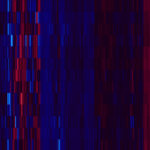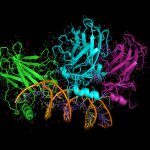Link to Pubmed [PMID] – 32175652
Link to DOI – 10.1111/cmi.13203
Cell Microbiol 2020 Aug; 22(8): e13203
Entamoeba histolytica is the causative agent of amebiasis, an infectious disease targeting the intestine and the liver in humans. Two types of intestinal infection are caused by this parasite: silent infection, which occurs in the majority of cases, and invasive disease, which affects 10% of infected persons. To understand the intestinal pathogenic process, several in vitro models, such as cell cultures, human tissue explants or human intestine xenografts in mice, have been employed. Nevertheless, our knowledge on the early steps of amebic intestinal infection and the molecules involved during human-parasite interaction is scarce, in part due to limitations in the experimental settings. In the present work, we took advantage of tissue engineering approaches to build a three-dimensional (3D)-intestinal model that is able to replicate the general characteristics of the human colon. This system consists of an epithelial layer that develops tight and adherens junctions, a mucus layer and a lamina propria-like compartment made up of collagen containing macrophages and fibroblast. By means of microscopy imaging, omics assays and the evaluation of immune responses, we show a very dynamic interaction between E. histolytica and the 3D-intestinal model. Our data highlight the importance of several virulence markers occurring in patients or in experimental models, but they also demonstrate the involvement of under described molecules and regulatory factors in the amoebic invasive process.
















